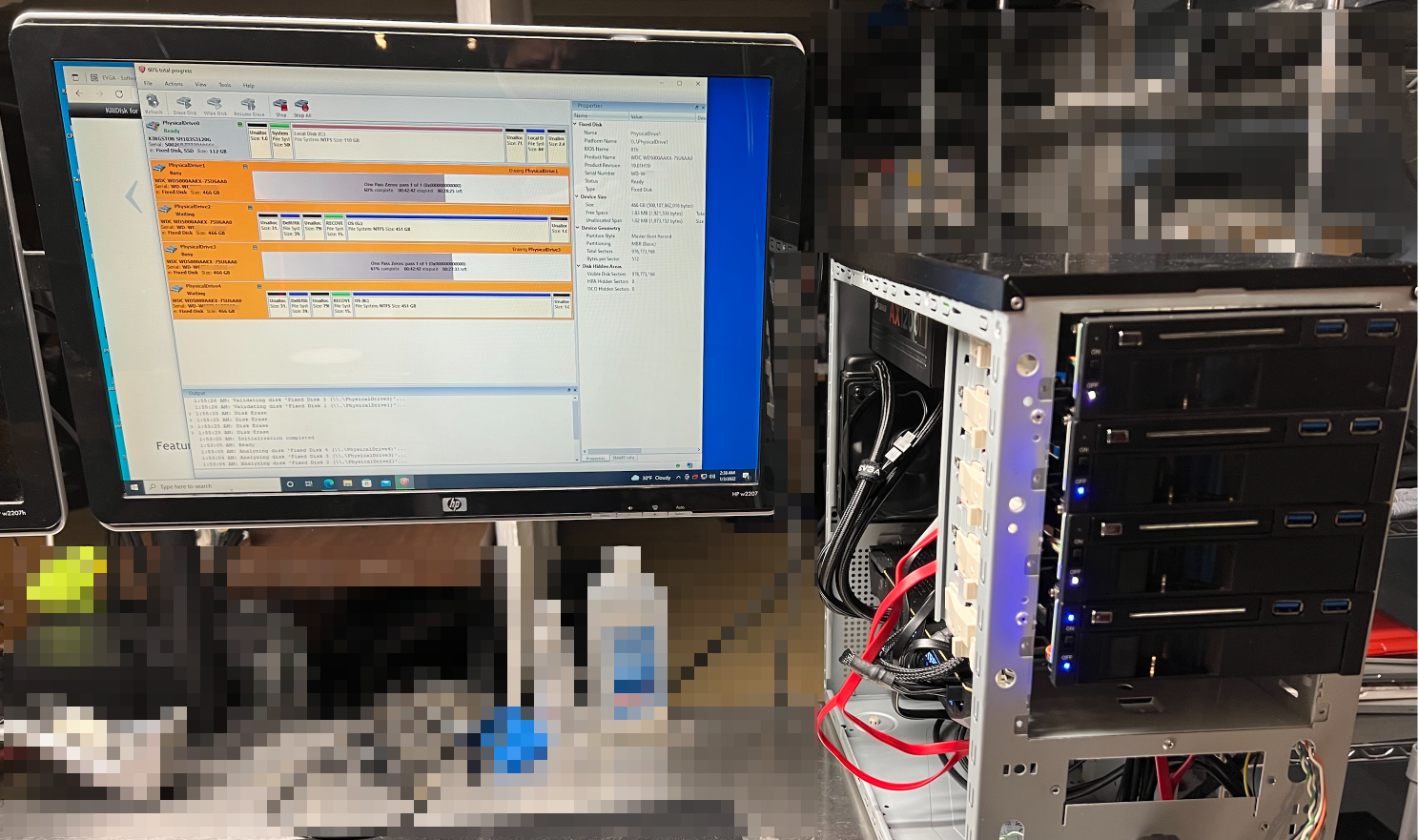timeshifter
Well-Known Member
- Reaction score
- 2,160
- Location
- USA
Based on a recent discussion about hard drive hoarding I decided to build a machine to wipe all the drives I've got lying around. I've also got a decent GPU that I wasn't using so I figured I'd let it mine in the same box, since I'll be running this PC 24/7 anyway. I put in (4) of these

Each device can run two drives at once, one 2.5 and one 3.5. I could have a total of (8) drives running on this setup, except my on-board SATA controller only has (6) ports. So for now I've got one of the 2.5's running my Windows OS, one 2.5 is available then the other (4) SATA ports are connected to the (4) 3.5 drive bays.
I was going to use Active Kill Disk for this purpose. But only after I got it built did I realize that the freeware version only supports two simultaneous or parallel cleanings at once. I don't mind paying for a license, but it seems that I would need (4) $40 licenses to to do four disks at once, or $160.
My preference would be to keep this machine running Windows. I plan to run NiceHash miner for the GPU. I could use a bootable DBAN disk and do the same thing but then I couldn't mine at the same time. Maybe some other Linux variant, but I'd not great with Linux, so prefer Windows.
Having said all that, here are some questions I hope someone can help clarify:
1) Is Active Kill Disk really $160 to simultaneously four drives at a time?
2) Can you recommend a free or inexpensive Windows program for wiping drives?
3) Any recommendation for a reliable and hopefully inexpensive SATA card with 4 SATA ports?

Each device can run two drives at once, one 2.5 and one 3.5. I could have a total of (8) drives running on this setup, except my on-board SATA controller only has (6) ports. So for now I've got one of the 2.5's running my Windows OS, one 2.5 is available then the other (4) SATA ports are connected to the (4) 3.5 drive bays.
I was going to use Active Kill Disk for this purpose. But only after I got it built did I realize that the freeware version only supports two simultaneous or parallel cleanings at once. I don't mind paying for a license, but it seems that I would need (4) $40 licenses to to do four disks at once, or $160.
My preference would be to keep this machine running Windows. I plan to run NiceHash miner for the GPU. I could use a bootable DBAN disk and do the same thing but then I couldn't mine at the same time. Maybe some other Linux variant, but I'd not great with Linux, so prefer Windows.
Having said all that, here are some questions I hope someone can help clarify:
1) Is Active Kill Disk really $160 to simultaneously four drives at a time?
2) Can you recommend a free or inexpensive Windows program for wiping drives?
3) Any recommendation for a reliable and hopefully inexpensive SATA card with 4 SATA ports?
